Summer is here, can diabetics eat watermelon?
Summer is coming, and it is also the season of harvesting many fruits. However, this is often the most troublesome time for diabetic patients, facing the rich variety of fruits, on the one hand, its temptation is hard to resist, but on the other hand, they are very worried that it will raise blood sugar and aggravate their condition. Watermelon is sweet and juicy, and is one of the most popular fruits to quench the summer heat and quench the thirst of the public, but also due to its sweet taste, many diabetic patients are deterred.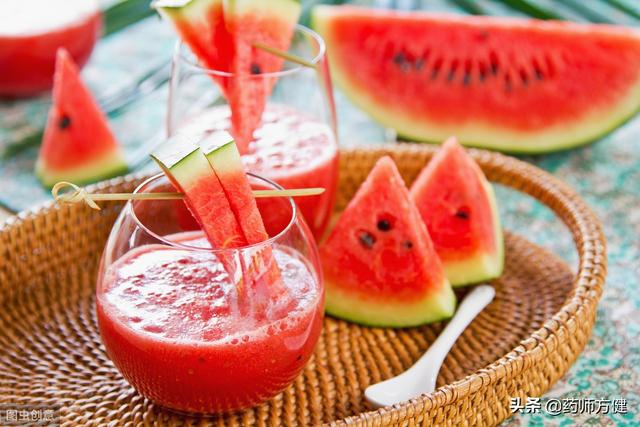
Summer is here, can diabetics eat watermelon?
Watermelon, although sweet, but in fact its sugar content is not high, some studies show that the sugar content of watermelon in about 5%, and more than 50% of which is still low glycemic index of fructose, but also contains up to 93% of water, so that watermelon is summer hydration, summer, quench the thirst of the best products. However, the glycemic index of watermelon is 72, which is a high glycemic index fruit in many fruits, which is due to the fact that watermelon also contains a certain amount of carbohydrates, and it is absorbed more quickly after entering the body, so it has a greater impact on blood sugar.
But does that mean you can't eat watermelon with diabetes? No, it doesn't! People with diabetes can still eat watermelon, but they need to pay attention to the following aspects.
Sugar lovers eat watermelon to pay attention to the following 4 points
1. Try to eat with good blood sugar control
If blood sugar control is not good, fasting and postprandial blood sugar are higher than normal, then eat watermelon will undoubtedly make the original diabetes worse. Diabetic patients, no matter what fruit, it is best to eat in the case of good blood sugar control, so as not to blood sugar will rise significantly.
2. Pay attention to the time of eating watermelon
With good blood glucose control, watermelon is best eaten between meals, as it can easily raise postprandial blood glucose if eaten before or after a meal.
3. Pay attention to the amount of watermelon you eat
Some studies have shown that although watermelon has a high elevation index, eating about 200g at a time will not raise blood sugar, so diabetic patients can control the amount of watermelon each time they eat this amount. At the same time, in order to avoid the impact on the next meal of postprandial blood glucose, can be appropriate to reduce the amount of the next meal staple food, such as in the next meal to reduce 25g rice.
4. Avoid drinking watermelon juice
Although diabetics can eat watermelon, they should try to avoid drinking watermelon juice. This is because when watermelon is made into juice, the carbohydrates as well as sugar it contains are concentrated inside the watermelon juice, and it is easy to drink too much of it, which can raise blood sugar.
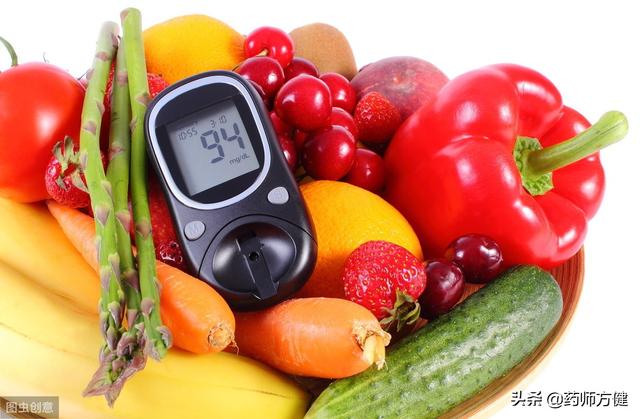
This is how diabetics can still get relief from the summer heat
In addition to watermelon, in fact, diabetics can choose other fruits in summer, lower glycemic index fruits such as apples, pears, bananas, kiwi, cherries, grapefruit, peaches, etc., are suitable for diabetics to eat, as long as you pay attention to the above points can be. In addition, in terms of beverages to quench their thirst in summer, it is best to drink plain water or pure water, any sweetened drinks may have added sweeteners or contain glucose, are not suitable for diabetic patients to drink.

For diabetic patients, do not forget the principle of dietary control at any time. Summer is the fruit season, although there are many fruits to choose from, but diabetic patients should not eat without restraint, properly grasp the above points, in order to be able to enjoy the delicious fruits, but also not let the blood sugar out of control.
References:
Wang Rong, Fan ZH. Dietary fruit intake and diabetes risk[J]. China Food and Nutrition, 2014, 20(5) 84-87
[Professional doctor to answer your questions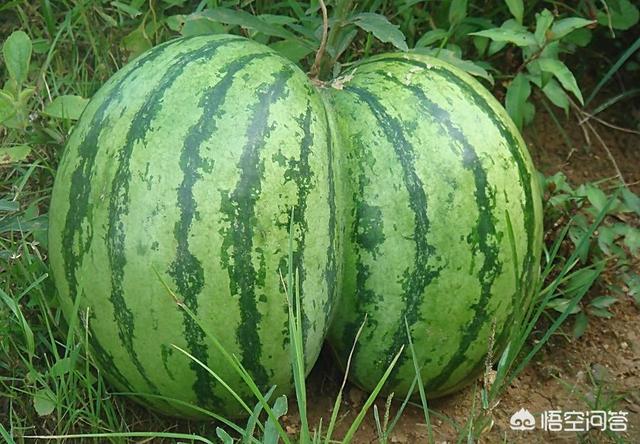
It is safe to say that people with diabetes can eat watermelon, and watermelon is also very suitable for people with diabetes. The reason why many people have concerns about eating watermelon is because it tastes sweet and is considered to be a food with a high sugar content, which is in fact a big misconception.
The blood sugar in the body mainly comes from glucose in food, watermelon does contain glucose and fructose which is sweeter in taste directly, but it contains only about 4 grams per 100 grams. While rice and noodles and other staple foods do not directly contain glucose, but its main component carbohydrates after digestion will produce a large amount of glucose, per 100 grams of rice and noodles contain carbohydrates up to 75 grams or so. In contrast, the sugar content in watermelon is actually much lower than in staple foods, and the main ingredient in watermelon is water, which actually makes watermelon a hydrating food.
It can be seen that the effect of watermelon on blood glucose is not great, and if eaten in a reasonable way the effect on blood glucose can almost be ignored. So, how to eat watermelon reasonably?

First, the blood glucose control should be stable and up to standard, such as fasting blood glucose should be controlled below 7.0mmol/L, and 2 hours after meal blood glucose should be controlled below 10.0mmol/L. Otherwise, eating watermelon may cause greater fluctuation of blood glucose, and it is important to know that fluctuation of blood glucose is more harmful than simply high blood glucose.
Secondly, in order to minimize the impact of watermelon on blood sugar, you can use watermelon's high water content as well as its high dietary fiber content to replace some of the main food with watermelon during meals, for example, eating one or two less main meals if you eat four taels of watermelon; you can also eat watermelon as an extra meal between meals.
Third, the watermelon can be divided into two to do a melon two to eat, such as the melon flesh as a meal to eat, the watermelon rind to remove the Cuiyi after leaving the melon white into a refreshing coleslaw to eat, the melon white diuretic effect is very strong, is conducive to promoting blood circulation, so that the watermelon's beneficial components of the better use of the watermelon.
In short, people with diabetes need to eat some fruit every day, and studies have confirmed that people who eat 150-250 grams of fruit a day can reduce the risk of diabetic complications by 30%. So don't be afraid to eat fruit, and realize that dietary control of diabetes is not about controlling what you eat, but about limiting the total calorie intake from food, and that the amount of sugar content is not measured by how sweet it tastes, but by how much glucose is actually produced by digestion and absorption, and that not understanding this can lead you into misconceptions, for example:
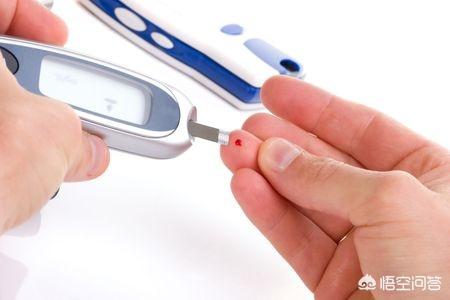
People with diabetes know to eat some coarse grains, but not because of the sugar content of coarse grains is less, in fact, two two cornmeal and white rice and white flour sugar content is almost no difference, but because the cornmeal contains more dietary fiber, dietary fiber is a kind of material that can not be absorbed in the gastrointestinal inhibition of the absorption of glucose and fat, which can greatly slow down the rate of absorption and play a role in controlling the rise of blood glucose The magnitude of the role, but also more resistant to hunger, so people with diabetes eat coarse grains can not eat more.
Many people think that people with diabetes can not eat meat, worried about eating meat on the blood sugar and blood lipids have an impact, in fact, eat less meat refers to less fat meat, for lean meat rich in high quality protein, is the need to eat enough in moderation, such as eating two taels a day, on the one hand, the body digests and absorbs high-quality protein itself is the process of consuming glucose, on the other hand, high-quality protein can be an alternative to blood glucose for the body to reduce the amount of intake of staple foods, and more importantly, high-quality protein is the main nutrient of strong muscles. More importantly, high quality protein is the main nutrient of strong muscles, strong muscles usually need more blood sugar to maintain normal physiological activities, which is conducive to the stable control of blood sugar.
In summary, how to control the diet of people with diabetes is the need to learn some knowledge, otherwise eating is a great enjoyment of life, unreasonable diet is not only not conducive to the control of the disease, but also lose the power to enjoy the joy of life, which is not what is needed, and even more is not what is advocated.
I hope this answer can help you, welcome to click on the attention and leave a message, together to learn and exchange more health knowledge.
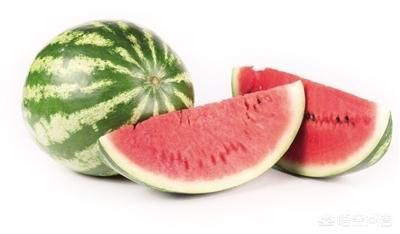
Can diabetics eat watermelon or not? Experts interviewed by the reporter said that diabetics can actually eat watermelon!
Xi'an Jiaotong University Second Affiliated Hospital Endocrinology Department Dr. Li Xiaohong told reporters that watermelon is a low-calorie food, per 100 grams of only 3.1 kcal calories, watermelon water content (93.3%) than most of the fresh fruit water content (85% to 90%) higher, rich in pectin, fructose and dietary fiber, contains a very low amount of energy and carbohydrates, the impact on blood glucose is not large; watermelon as a summer fruit to quench the thirst of people with diabetes can eat less. summer summer thirst quenching fruit, diabetic patients can eat less.
The effect of a food on blood glucose is determined not only by the food's glycemic index (GI), but also by the food's glycemic load (GL). Watermelon has a GI of 72, which is considered a high glycemic index food. But the main thing to look at is the amount of watermelon eaten, which is to look at the food glycemic load (GL). The glycemic load of watermelon is 4.2, which means that 100 grams of watermelon contains 4.2 grams of carbohydrates. If you eat 100-200 grams of watermelon every day, the impact on postprandial blood glucose is very small, so diabetic patients can eat watermelon in moderation.
Although it is said that diabetic patients can eat watermelon, but must pay attention to the following points:First of all, if your blood sugar is not well controlled recently, it is recommended not to eat watermelon and other fruits first. General fasting blood glucose below 7mmol / L, 2 hours after meal blood glucose control below 10mmol / L, glycated hemoglobin below 7.5%, blood glucose stability without significant fluctuations can choose to eat watermelon and other fruits. Secondly, choose fruits with low sugar content, such as watermelon and peaches are optional. It is not recommended that diabetic patients choose tropical fruits with high sugar content, such as lychee, cinnamon, bananas, etc.; the sugar content of these fruits reaches about 15% to 25%, which means that 100 grams of fruit is almost 15 to 25 grams of carbohydrates, and eating this kind of fruits will have a greater impact on blood sugar. Third, eating fruit should pay attention to time. Many people are accustomed to eating fruit immediately after meals, but diabetic patients should be in the middle of the two meals will be fruit as a meal, especially at the table can not go with the flow of eating the meal and then eat fruit. In addition, when hungry or after physical activity, you can also eat some fruit in moderation. Fourth, many people will not eat the white flesh part of the watermelon, that this part is not sweet and will affect the whole taste of watermelon. The reason why this part is not sweet is that it contains almost no sugar, plus it contains a lot of dietary fiber. If a diabetic eats the red and white flesh together, it is better for controlling blood sugar after a meal and increases satiety after eating, so it is worth eating. Alternatively, the white flesh can be peeled into small pieces on its own to make a flavorful gazpacho, which is not a bad idea.
Xi'an Daily News reporter Wang Chao
As soon as summer comes, different varieties of fruits come on the market one after another, tempting us in different ways from spring to fall. From the perspective of health care, "Eat roots in winter, sprouts in spring, melons in summer, and fruits in fall." Eating more melons in summer is good for the human body.
And watermelon is one of the main fruits with a longer eating season because you can choose to plant it in different seasons to stagger the seasonal differences. Watermelon has enough water and is relatively sweet, so in the hot summer days, eat a few pieces of watermelon, not to mention how soothing, both to quench your thirst and addictive.
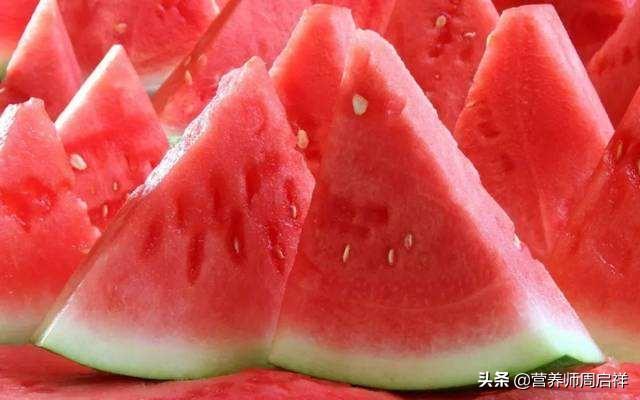
Can diabetics eat watermelon??
The answer is of course yes, except that diabetics should control the amount of watermelon they eat and should not eat too much.
Whether a diabetic patient is suitable to eat a certain food depends on the glycemic index of the food. Foods with a high glycemic index are generally not recommended for diabetic patients in order to stabilize the patient's glycemic index, so as not to make the blood glucose rise rapidly after eating the food, which will stimulate the pancreas to secrete more insulin and increase the burden on the pancreas, which is not conducive to stabilizing the condition.
Watermelon has a glycemic index of 72, which is over 70 and is a high glycemic index food, so it is not recommended to eat more of it.
But watermelon as a fruit, water content, eat less watermelon, intake of sugar is not much, the key is to control the number of good food, can not be like a normal person, a meal to eat a full, eat an overdose, in that case, the blood glucose value should be soaring.

The key to a diabetic diet is proper structure
Strictly speaking, there is no food that needs to be absolutely prohibited. For example, rice, steamed bread are high glycemic index food, long-term dietary habits, even diabetics can not eat a little, the key is the overall mix to be reasonable.
That is, in the whole food mix of the day, try to reduce the amount of high glycemic index food, such as rice with some beans, coarse cereals, flour with some coarse grains, to make a two-combination pasta, three-combination pasta, so that the glycemic index of the food down, the rise of blood glucose after the meal will be slowed down, and is conducive to blood glucose stability.
Also increase the proportion of high-fiber foods in the foods you eat throughout the day. High-fiber foods, most of which are medium to low glycemic index foods, are more suitable for diabetics. For example, coarse grains and vegetables.
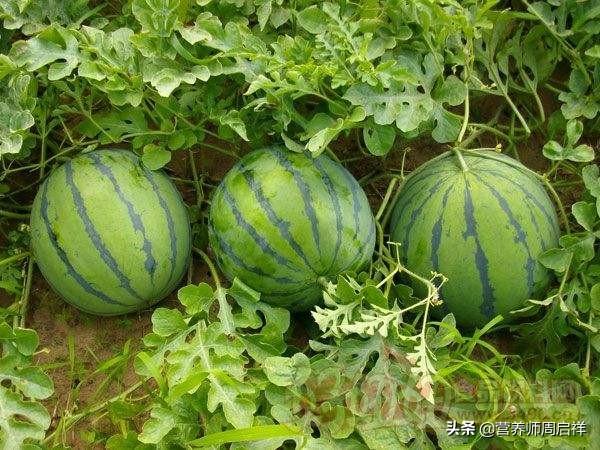
Therefore, for diabetics, the main thing is to control a good amount and the overall mix of reasonable problems, after all, eat is a thing that everyone aspires to, not because you have diabetes and absolute control of some of the food, so that life completely lost the fun.
Hot weather, there is no better than eating a piece of ice watermelon to make people feel very comfortable, but this time diabetics are more difficult, because watermelon is a high glycemic index food, from the perspective of the glycemic index is not suitable for diabetics to eat. However, the good thing is that the ultimate control of diabetic patients is postprandial blood glucose, as long as you can reasonably allocate a good diet to ensure that postprandial blood glucose stability, the diet can still be relaxed some, that is to say, diabetic patients can eat watermelon, but there are precautions.
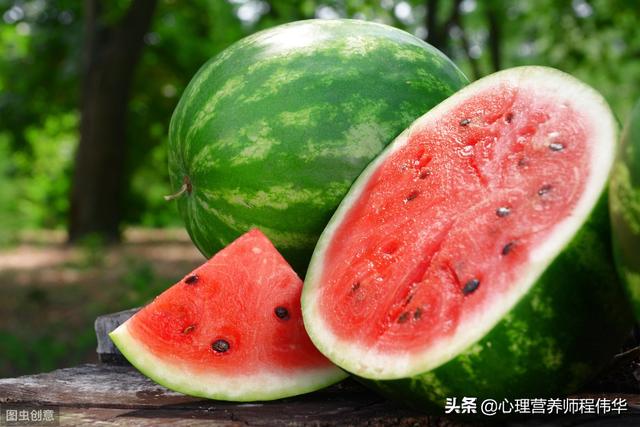
Diabetic patients in addition to pay attention to the glycemic index of food, there is an indicator called "glycemic load", as long as there is no more than this standard, high glycemic index of the food can also be eaten, such as watermelon, although you can't feast on it, but a reasonable solution to the cravings or can be, glycemic load is also known as the GL, meaning that it is necessary to meet the <10, can be for the watermelon, as long as the daily intake of not more than 250g can be. 10, can, for watermelon, as long as the daily intake does not exceed 250g can, sounds like a lot, but because watermelon water is more, more pressure scale, in fact, actually not much.
However, when eating, you need to pay attention to 3 precautions, to meet these 3 points, in order to eat with confidence, the first do not eat on an empty stomach, it is best to eat between meals, the second, cut into pieces of the size of the first joint of the thumb. Third, eat with milk, or nuts can also be, milk is rich in protein, nuts are rich in fat, can help delay the blood sugar after meals. Finally, add a little, small bites of slow food, do these, watermelon can be safely eaten, the following is a high glycemic index food, but meet the amount of low GL fruits, can be used as a reference:
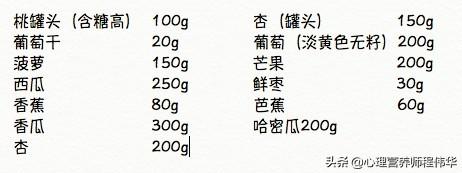
The sweet and refreshing watermelon is one of everyone's favorite fruits in the hot summer. Especially sweet as sugar, sandy watermelon in the refrigerator chilled before eating, is the summer heat in life a great pleasure. However, when diabetics see this delicious watermelon, they can only be deterred. So, diabetics can't eat any watermelon in summer?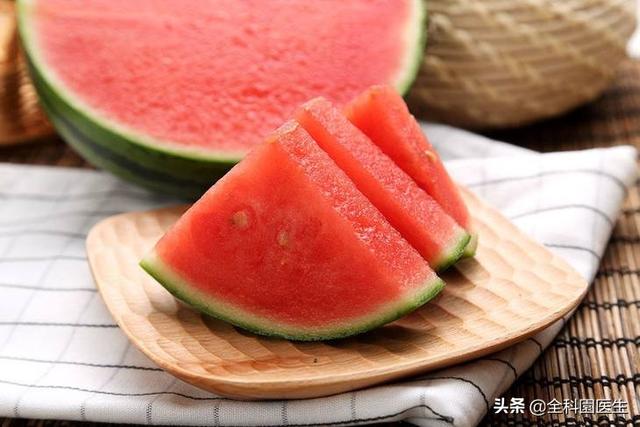
The sugar content of watermelon is about 5%, and it is mainly glucose, sucrose and part of fructose, which means that eating watermelon will lead to an increase in blood sugar. Therefore, sugar lovers should know their blood sugar situation before eating watermelon, and only eat it when their blood sugar control is relatively satisfactory and their condition is stable.
Normal people due to the timely secretion of insulin, can make blood glucose, urine sugar to maintain at a normal level. Diabetics are different, eat too much watermelon in a short period of time, not only will blood sugar rise, the more serious condition may also be due to metabolic disorders and acidosis, and even life-threatening.
The amount of carbohydrates (sugars) eaten by diabetics each day needs to be strictly controlled, so if watermelon is eaten several times a day, then the number of meals and pasta products (carbohydrates) should be reduced accordingly to avoid aggravating the condition.
It is generally accepted that a fasting glycemic index greater than 7 mmol/L and a postprandial glycemic index greater than 11 should be temporarily avoided. If the fasting glycemic index is 7 mmol/L or less and the postprandial glycemic index is 10 or less, theSmooth blood sugar controlThe amount of the product may then be moderately increased in theBetween mealsHave some.not suitableOh.
Summer is here, what can't be missing? Some people say nothing else matters, air conditioning, WiFi, watermelon, these three can not be missing! In the hot summer, staying at home, blowing air-conditioning, vertical network, and then a watermelon, the other really does not matter. Watermelon is sweet and delicious, water, flavorful and inexpensive, is definitely the first summer summer fruit, no opinion. But for diabetics, watermelon is unattainable, so sweet, eat, blood sugar, but also not high days!
In fact, the truth is this: although the watermelon is sweet, its sugar content is only about 5%, belongs to the low sugar fruit oh. Explain what is low sugar fruit, per 100g of fruit containing less than 10g of sugar for low sugar fruit, strawberries, papaya, cherries, pears, loquat, pomelo, etc. are low sugar fruit.The Chinese Dietary Guidelines for Diabetes recommend that diabetics can consume moderate amounts of low-sugar fruits.

Watermelon is very sweet, mainly because it contains a high percentage of fructose, which is a type of monosaccharide that, unlike glucose (which is also a monosaccharide), does not cause a significant increase in blood sugar.
Can diabetics eat watermelon? The answer is: yes. But there are conditions.
1. Provided that the blood glucose control is OK: fasting blood glucose can be controlled at 7.8mmol/L or less, and 2-hour postprandial blood glucose can be controlled at 10mmol/L or less.
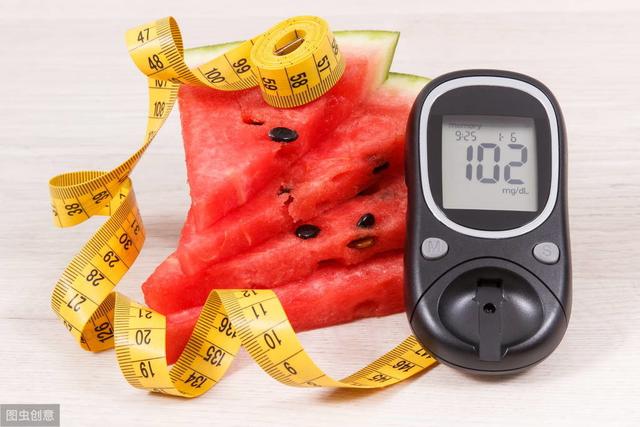
2. Fruit is usually eaten in the middle of two main meals (e.g., around 10 a.m. or 3 p.m.), and it is not advocated to eat fruit before or immediately after meals.
3. Watermelon can be eaten, but can not eat unlimited, low-sugar fruits, the amount of 200g-300g per day is more appropriate, at the same time, you should reduce the amount of staple food, to ensure that the total daily calories in a constant range. Such as bananas, dates, hawthorn, red dragon fruit, sugar cane and other fruits with high sugar content, diabetic consumption is best controlled within 100g, to avoid a substantial increase in blood sugar.
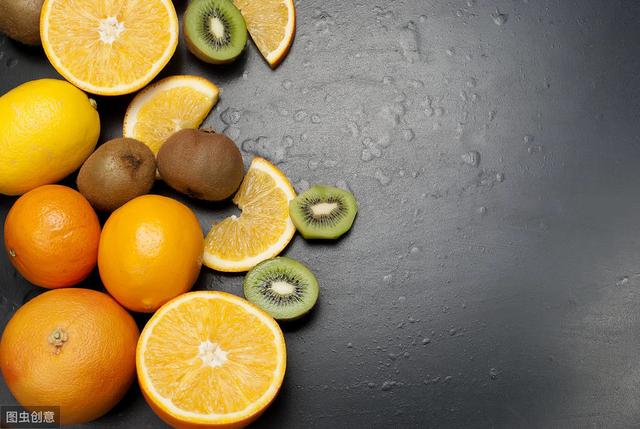
In a sense, there is no food that diabetics can't eat, and there is no food that can be eaten freely, the key is the amount of intake. If the daily intake exceeds the body's needs, excess energy will inevitably lead to blood sugar instability. Therefore, we should pay attention to the "eat-move balance".
Can eat, need to control the amount.
Sugar lovers can certainly eat watermelon.Watermelon is sweet and has a high glycemic index, but that doesn't mean sugar lovers can't eat watermelon. Just know when to eat watermelon, and how much to eat.
To see something, suitable or not for sugar lovers, we have to pay attention to the glycemic index and glycemic load, in addition to the sugar content. Let's take a look at some detailed data of watermelon in the chart below:
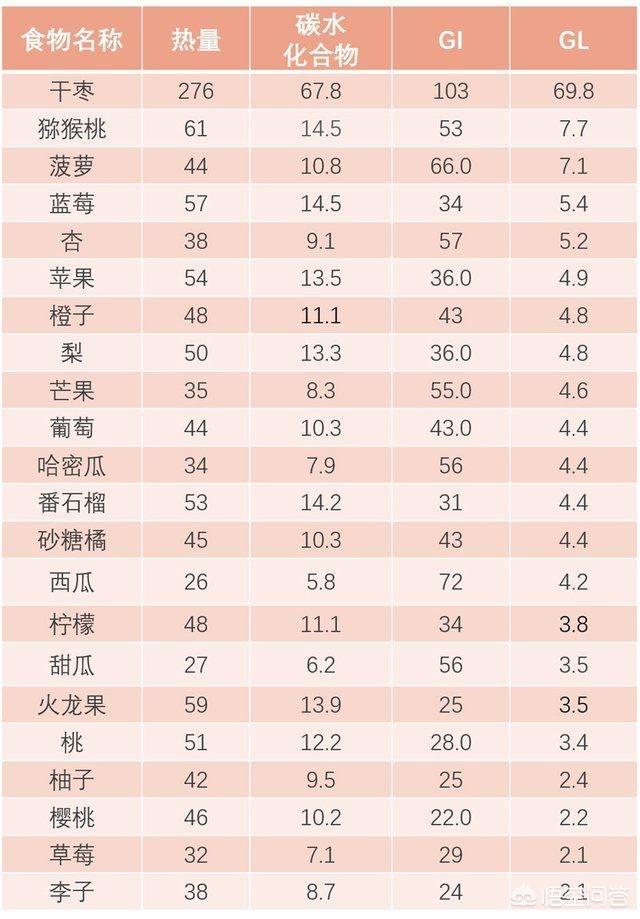
Watermelon has a calorie count of 26; a sugar content of 5.8 (different varieties of watermelon will have different sugar content, such as 8424, which has a higher sugar content than regular watermelon); a glycemic index of 72; and a glycemic load of 4.2.
From the data, we can conclude that watermelon has a high glycemic index and has a high transient effect on blood glucose. However, the glycemic load is low, which means that, taken together, the effect of watermelon on blood glucose is within tolerable limits.
Since instantaneous blood sugar has a large impact, we must be careful about when we eat watermelon. Let's look at two graphs first:
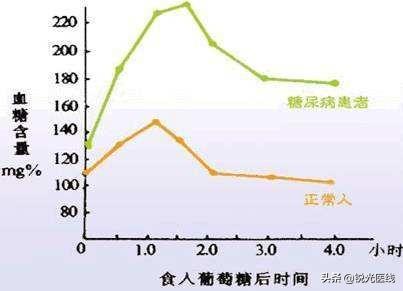
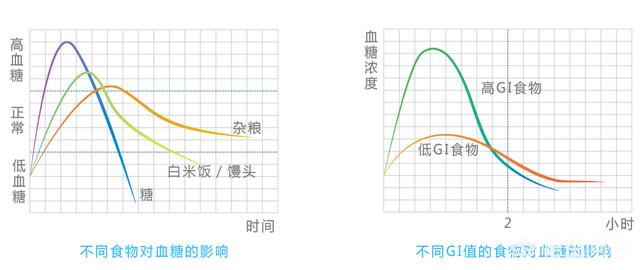
With the chart above, we can see that after consuming the food, the sugar user's blood sugar is on the rise for the first 1.5 hours. The same time period applies when eating high GI foods.
If we consume watermelon, immediately after a meal, it will make the blood sugar spikes act as an additive result. At this point, it is definitely not favorable to sugar control for sugar lovers.
Therefore, the best way to consume it, is to wait for 2~3 hours after the meal, when the blood sugar is in the period of decline, at this time, eat a little watermelon in small quantities, for example, eat 1~2 slices, it will not have a great impact on blood sugar.
And remember one more thing, of course.Consumption of watermelon, including other fruits, presupposes that your own blood sugar levels, are in a more stable state.If your blood sugar has been high recently, then don't consume it.
It's not easy to create, so if you find it helpful, please like, retweet, or comment! If you still don't understand, please leave a message in the comment section!
Diabetic patients can consume a small amount of watermelon, consuming too much will lead to the patient's body containing too much sugar, which will easily lead to sugar overload. Usually, it can be consumed in small amounts between meals because watermelon itself contains more water. Overall, patients can eat a small amount. Diabetic patients should pay attention to a balanced diet, pay attention to the reasonable distribution of carbohydrates, protein, fat
This question and answer are from the site users, does not represent the position of the site, such as infringement, please contact the administrator to delete.